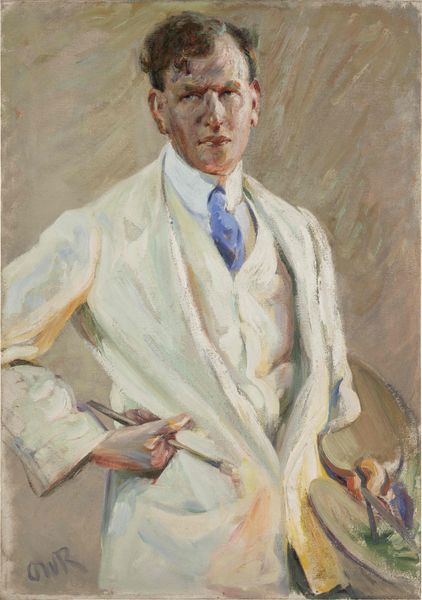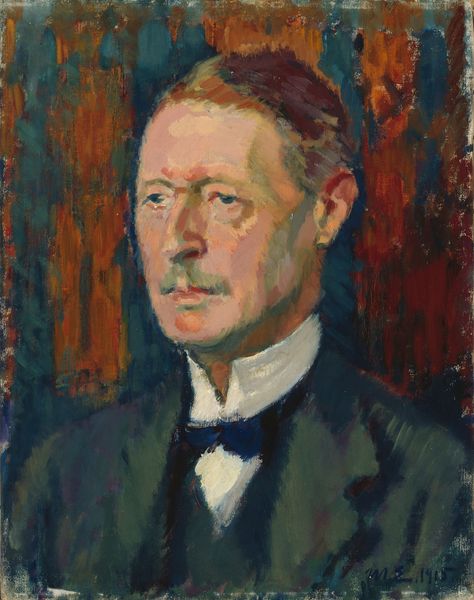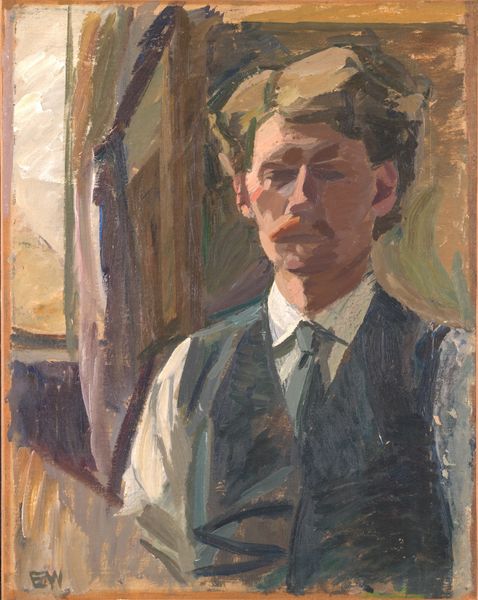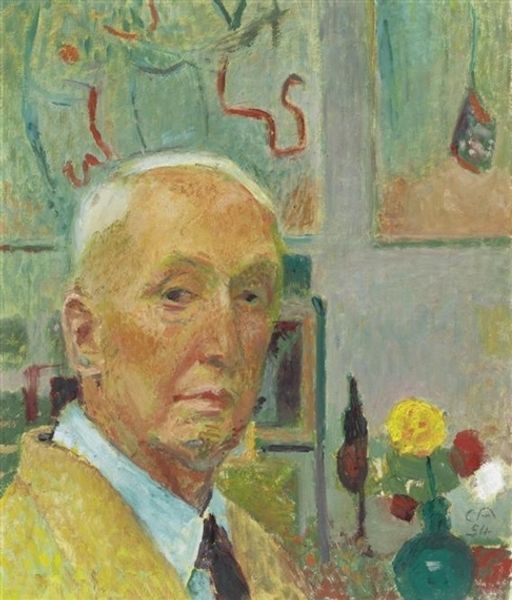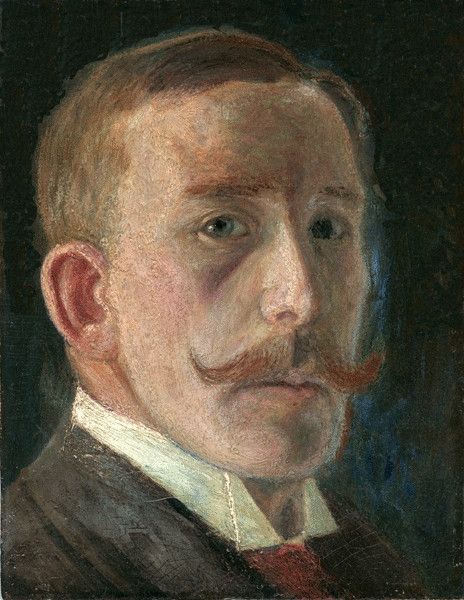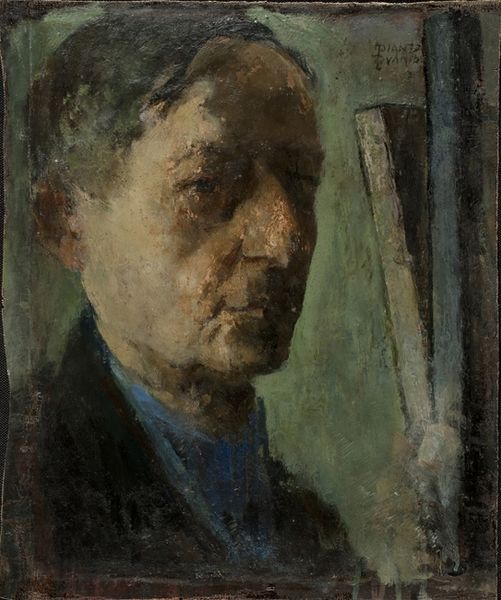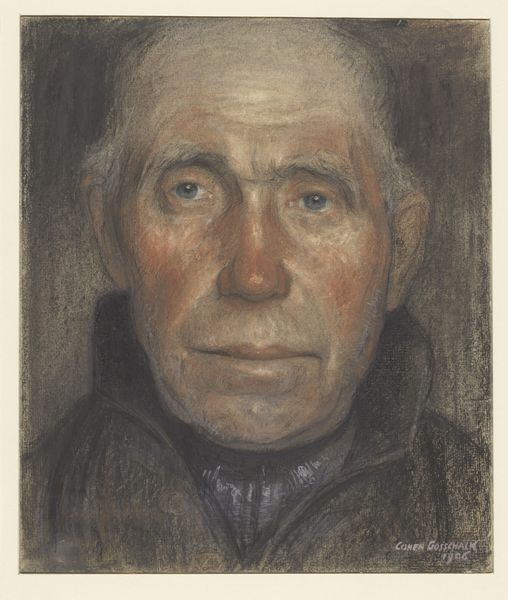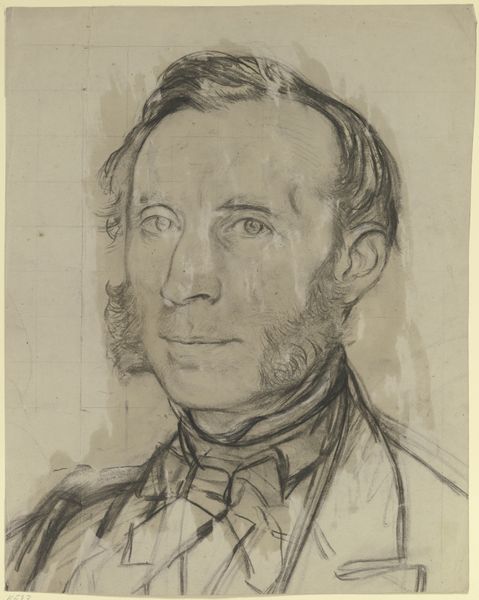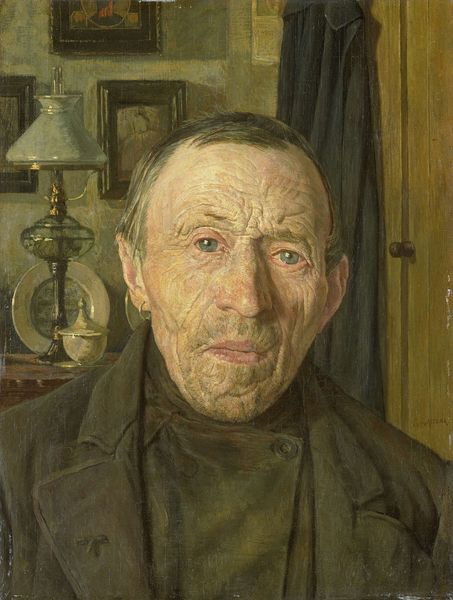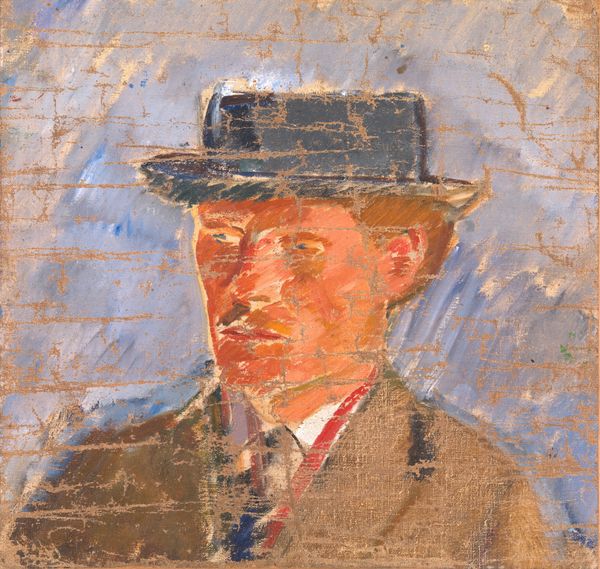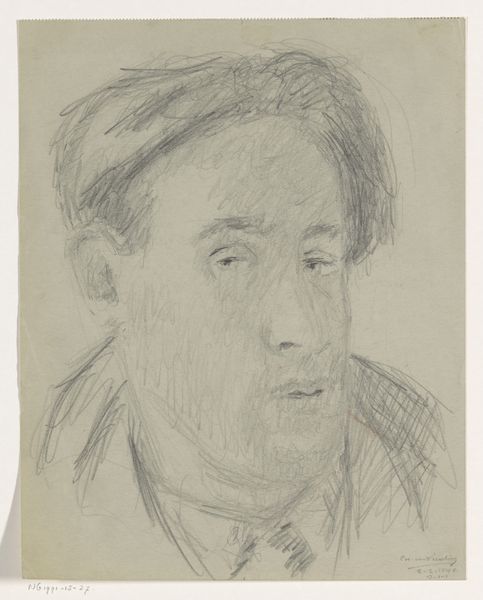
oil-paint
#
portrait
#
oil-paint
#
oil painting
#
modernism
#
realism
Dimensions: 53.5 cm (height) x 50.5 cm (width) (Netto), 62.6 cm (height) x 59.7 cm (width) x 4.5 cm (depth) (Brutto)
Curator: Let’s discuss Karl Schou's "Self-Portrait" from 1936. The painting is held at the SMK, the National Gallery of Denmark, rendered in oil paint. Editor: The first thing that strikes me is the somber tonality. There’s a definite austerity in the colour palette; grey, blues and dull white. It gives the portrait an almost melancholic atmosphere. Curator: Agreed, but let’s consider the materiality itself. The brushstrokes, visible and direct, reveal Schou’s engagement with the act of painting. He captures his likeness, yes, but it's also a record of a specific process in 1936—a time of considerable social and economic unease in Europe. Was he reflecting this through the direct application and somewhat bleak tonality of the piece? Editor: Possibly, but focusing solely on socio-economic conditions might limit our understanding. Look at the way light falls across his face, the sharp contrast emphasizing his bone structure and drawing attention to his gaze. The asymmetry in his eyes—it conveys so much! Curator: Right. But the sitter, positioned centrally, wearing a rather formal shirt, waistcoat and tie. It reflects middle-class values, perhaps Schou's self-positioning within the professional structure of artistic labour, rather than seeing himself as a bohemic counter-culture. The portrait becomes evidence of material identity. Editor: Perhaps, and his artistic choices contribute significantly to its mood and effect. The layering of colours to convey age, for example. Notice how the paint isn't blended smoothly; he used discrete strokes, suggesting the passage of time. This, combined with the subtle expression, grants the work its distinctive character. Curator: So in a formal sense, the slightly muted aesthetic has ties to the austerity of its time? Editor: In a way, yes. By dissecting these pictorial choices we're not just seeing a likeness; we're interpreting how colour, light, and composition work together. Curator: I appreciate how this exploration clarifies Schou's negotiation of the artistic and economic conditions of his time, bringing to the surface some thought-provoking intersections of making and being. Editor: Exactly, it highlights how artful elements contribute to creating not just an image, but an impactful reflection of being human.
Comments
No comments
Be the first to comment and join the conversation on the ultimate creative platform.
